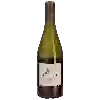
Winery Jean Claude MasAstélia Limoux
In the mouth this white wine is a powerful.
This wine generally goes well with vegetarian, poultry or lean fish.
Taste structure of the Astélia Limoux from the Winery Jean Claude Mas
Light | Bold | |
Dry | Sweet | |
Soft | Acidic |
In the mouth the Astélia Limoux of Winery Jean Claude Mas in the region of Languedoc-Roussillon is a powerful.
Wine flavors and olphactive analysis
On the nose the Astélia Limoux of Winery Jean Claude Mas in the region of Languedoc-Roussillon often reveals types of flavors of cream, butter or stone and sometimes also flavors of honey, non oak or earth.
Food and wine pairings with Astélia Limoux
Pairings that work perfectly with Astélia Limoux
Original food and wine pairings with Astélia Limoux
The Astélia Limoux of Winery Jean Claude Mas matches generally quite well with dishes of pasta, vegetarian or poultry such as recipes of pasta with alfredo sauce, nanie's diced ham quiche or oven roasted chicken.
Details and technical informations about Winery Jean Claude Mas's Astélia Limoux.
Discover the grape variety: Chardonnay
The white Chardonnay is a grape variety that originated in France (Burgundy). It produces a variety of grape specially used for wine making. It is rare to find this grape to eat on our tables. This variety of grape is characterized by small bunches, and small grapes. White Chardonnay can be found in many vineyards: South West, Burgundy, Jura, Languedoc & Roussillon, Cognac, Bordeaux, Beaujolais, Savoie & Bugey, Loire Valley, Champagne, Rhone Valley, Armagnac, Lorraine, Alsace, Provence & Corsica.
Last vintages of this wine
The best vintages of Astélia Limoux from Winery Jean Claude Mas are 2016
Informations about the Winery Jean Claude Mas
The Winery Jean Claude Mas is one of of the world's great estates. It offers 148 wines for sale in the of Limoux to come and discover on site or to buy online.
The wine region of Limoux
Limoux is a relatively New appellation (created in 2003) in the eastern Part of the Aude region of Southern France, which applies to both red and white wines. The vineyards extend around the town that gave it its name, in the foothills of the Pyrenees east of the Languedoc-Roussillon/corbieres">Corbières and south of Carcassonne. Historically, this region is best known for its Sparkling wines, which are produced and sold under the appellations of Blanquette de Limoux and Crémant de Limoux. The vineyards here are higher and cooler than those of any other appellation in the Languedoc-Roussillon, and also further away from the moderating temperature influences of the Mediterranean.
The wine region of Languedoc-Roussillon
Languedoc (formerly Coteaux du Languedoc) is a key appellation used in the Languedoc-Roussillon wine region of southern France. It covers Dry table wines of all three colors (red, white and rosé) from the entire region, but leaves Sweet and Sparkling wines to other more specialized appellations. About 75% of all Languedoc wines are red, with the remaining 25% split roughly down the middle between whites and rosés. The appellation covers most of the Languedoc region and almost a third of all the vineyards in France.
The word of the wine: Severe
Said of a red wine that is generally young, very marked by tannins and astringent. See austere.














